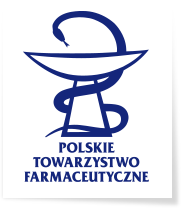Agata Kryczyk-Poprawa, Małgorzata Król
Vitamin D and Its Analogs: New Perspectives on Therapeutic Applications
2025-03-20
Research Subject. Vitamin D, commonly known as cholecalciferol (D3) and ergocalciferol (D2), and its analogues are currently being widely studied for their biological effects and potential therapeutic applications. Vitamin D is essential for skeletal health, and its pleiotropic effects include modulation of the immune, muscular, and nervous systems, anti-inflammatory effects, and effects on cell differentiation. Vitamin D deficiency is considered a public health problem due to its high prevalence worldwide. The relationship between vitamin D intake, serum levels, and many diseases is currently the subject of numerous studies.
Research Objective. The aim of the study was to characterize the pleiotropic effects of vitamin D. The article presents the benefits of using vitamin D and its analogues in the therapy of various diseases, as well as its role in the pathophysiology of these diseases. In addition, it discusses the standards for assessing the supply of the human body with vitamin D, current guidelines for its supplementation, and toxicity.
Materials and Methods. A review of scientific literature, mainly from the years 2019–2024, was conducted, covering clinical and preclinical studies related to vitamin D and its analogs. The analysis focused on studies of the mechanisms of action of vitamin D, its therapeutic effectiveness, and the safety of its use.
Results. Currently, vitamin D and its analogues are used in the treatment of rickets, osteoporosis, psoriasis, and secondary hyperparathyroidism. New perspectives are related to their therapeutic use in the prevention and treatment of many other diseases, which can significantly improve patients’ quality of life. Taking vitamin D preparations is associated with numerous benefits for patients, including a reduced risk of falls in the elderly, an increased left ventricular ejection fraction in patients with heart failure, a reduced risk of developing type 2 diabetes, and at the same time, an increased chance of returning to normal glycemia in patients with prediabetes, a reduced number of attacks in people with migraine headaches, and a better prognosis in oncological patients. Vitamin D supplementation has been shown to reduce the level of androgens and anti-Mullerian hormone and reduce the thickness of the endometrium in patients with polycystic ovary syndrome, improve semen parameters in men, and increase the chance of giving birth to a live child. In Alzheimer’s disease, high doses of calcitriol may increase the risk of death, suggesting that vitamin D supplementation should be considered in these patients. Daily vitamin D supplementation at a dose of 2000 IU (50 µg) is a simple, effective, and safe method of preventing and treating vitamin D deficiency in the general adult population.
Conclusions. Vitamin D deficiency is associated with numerous diseases and higher overall mortality. Vitamin D plays a significant role in the pathophysiology and prevention of musculoskeletal, muscular, reproductive, immune, metabolic, neurological, neurodegenerative, cardiovascular, and skin diseases, as well as cancers. However, supplementation of vitamin D in adults with sufficient vitamin D levels (baseline 25OHD > 50 nmol/L) does not prevent cancers, cardiovascular events, or progression of type 2 diabetes; hence, further research is necessary to fully understand the mechanisms of action and optimize therapy.
Keywords: vitamin D, vitamin D analogues, pleiotropic effects, cancer, supplementation.
© Farm Pol, 2024, 80(10): 697–711
Vitamin D and Its Analogs: New Perspectives on Therapeutic Applications

